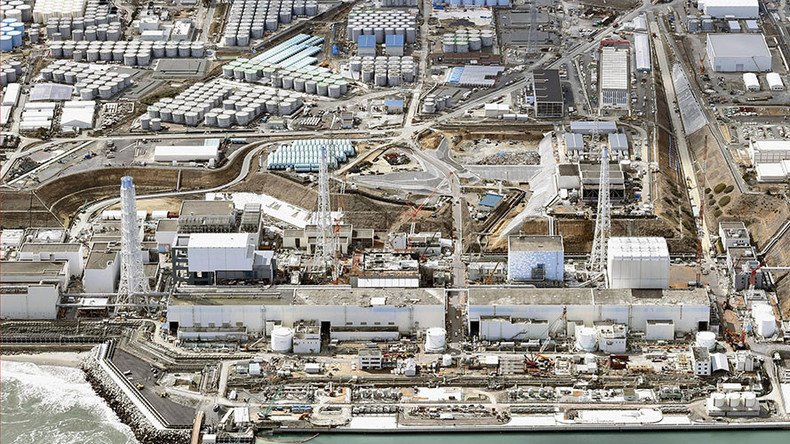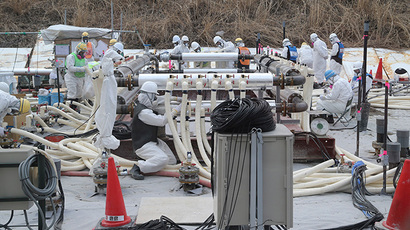Fukushima ice wall gets Japan nuclear regulator’s approval

Japan has given the green light to the launch of its 35 billion yen ($312mn) underground ice wall system around the Fukushima plant, designed to form a barrier and prevent the contamination of groundwater beneath the crippled nuclear facility.
The Nuclear Regulation Authority (NRA) announced that they had signaled that the first sections of the system are to be switched on. The giant underground refrigerating system will erect and maintain a barrier of frozen soil around the plant.
The complex ice wall system consists of underground pipe network stretching 30 meters (100 feet) below the surface for nearly 1.5 kilometers around the reactor and turbine buildings. The pipes are designed to transport refrigerant cooled to minus 30 degrees Celsius to chill the soil around them until it freezes.
The coastal section of the wall will be turned on Thursday, according to the operator Tokyo Electric Power Co. (TEPCO). The rest of the sections of the network will be started up in several phases next month to allow for possible adjustments of the system.
“It is important to collect sufficient data in a continuous manner and implement the freezing while keeping watch,” said NRA chairman Shunichi Tanaka.
TEPCO’s plan is to first freeze the entire wall on the seaside and about half of the wall on the mountain side to first focus on preventing further contamination of the ocean. The company already managed to freeze small part of the ground and is hoping to freeze the entire wall within several months.
The $312 million government project built by Kajima Corp., which began in June 2014, was completed more than a year behind schedule due to technical miscalculations. Japan places high hopes and expectation on the ice wall to keep radioactive leak contained.
At present around 800,000 tons of radioactive water is being stored in 1,000 industrial tanks at the Fukushima after nuclear reactors were damaged in earthquake and tsunami in 2011. The contamination process continues as reactors must be cooled with water to contain their melted cores and keep them from overheating.
The water used to cool down the reactors continuously seeps through cracks, ending up in the basements of the reactors where it leaks underground through damaged sections to further contaminate groundwater flowing through a natural cycle.
The ice wall is designed to circumvent that type of a cooling system, forcing groundwater to flow around the ice wall thus diverting nature’s cycle away from the plant to prevent contamination of the ocean.
Water already contaminated at the site, meanwhile, will potentially be contained within the wall. TEPCO believes that if the project is successful, the system will allow the turbine basements to be dried by 2020, thus confining radiation to the damaged building reactors.
While optimistic that the coolant system will work, Tanaka cautioned on Wednesday against premature expectations as nature could also play a role in halting the leakage.
“It would be best to think that natural phenomena don’t work the way you would expect,” he told reporters.













